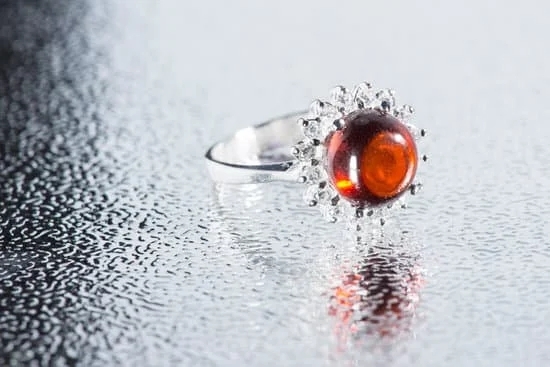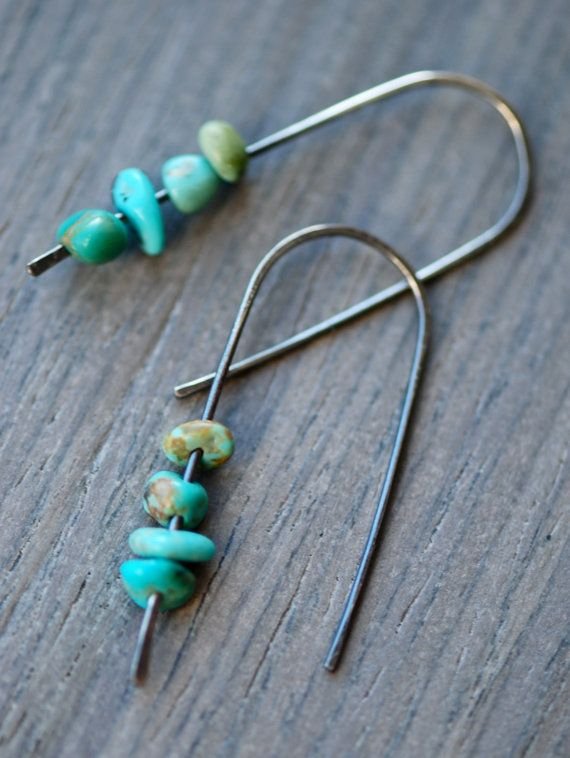Jewelry history is a captivating journey that spans across cultures and centuries, reflecting the significance and symbolism of adornment in human societies. From ancient civilizations to modern-day trends, jewelry has played a crucial role in personal expression, cultural traditions, and societal status. In this article, we will delve into the rich and diverse history of jewelry, exploring its origins, evolution, symbolism, and its enduring influence on the art of adornment.
The origins of jewelry can be traced back to ancient times when early humans adorned themselves with natural materials such as feathers, shells, and bones. These primitive forms of adornment evolved into more intricate designs as civilizations developed and mastered the art of metalworking. Throughout history, jewelry has served as a means of personal expression, religious devotion, social status, and even currency. The symbolic significance of different gems and designs has added layers of meaning to these precious adornments.
As we embark on this exploration of jewelry history, we will uncover the stories behind famous pieces from different eras and cultures – from the opulent treasures of ancient Egypt to the elegant sophistication of Art Deco jewelry. We will also examine how technological advancements have revolutionized the art of jewelry making and how changing trends have influenced the styles and designs over the decades. Ultimately, examining the past can provide valuable insights into predicting the future trends in adornment arts.
Ancient Jewelry
The history of jewelry dates back thousands of years, with evidence of adornment found in ancient civilizations across the globe. From Egypt to Mesopotamia, Greece to China, the use of jewelry as a form of personal adornment and expression has been a constant throughout human history. The word “jewelry” itself derives from the French word “jouel,” which means plaything, and reflects the intrinsic value placed on these ornamental items.
In ancient times, jewelry served not only as decorative pieces but also as symbols of status, wealth, and religious significance. From elaborate gold necklaces worn by Egyptian pharaohs to intricately carved jade ornaments in China, each culture had its unique style and materials used for creating jewelry. These ancient pieces provide insight into the beliefs, customs, and values of different societies, offering a window into their worldviews and social structures.
One fascinating aspect of ancient jewelry is the craftsmanship and techniques used to create these pieces. From intricate filigree work to delicate gemstone settings, skilled artisans employed a variety of methods to produce stunning jewelry that has stood the test of time. As we continue to unearth new discoveries and archaeological finds, our understanding of ancient jewelry continues to evolve, shedding light on the technological advancements and artistic achievements of past civilizations.
Evolution of Jewelry
Jewelry has been a part of human society for thousands of years, with evidence of adornments dating back to prehistoric times. The evolution of jewelry from ancient times to modern day has been a fascinating journey filled with cultural significance, technological advancements, and changing trends. This section will delve into the rich history of jewelry, tracing its development from its early roots to the present day.
Ancient Beginnings
The history of jewelry can be traced back to ancient civilizations such as Egypt, Mesopotamia, and Rome, where precious metals and gemstones were used to create intricate ornaments. In these early societies, jewelry was not only valued for its aesthetic appeal but also held spiritual and religious significance. The craftsmanship of ancient jewelry pieces serves as a testament to the skills and artistry of early artisans.
Middle Ages and Renaissance
During the Middle Ages and Renaissance periods, jewelry became a symbol of wealth and social status. Intricate designs incorporating pearls, diamonds, and other precious stones were favored by royalty and the upper class. Religious themes also influenced jewelry design during this time, with crosses and religious symbols adorning many pieces.
Modern Innovations
The Industrial Revolution brought about significant changes in the jewelry industry, allowing for mass production and the use of new materials such as platinum and synthetic gemstones. In the 20th century, iconic jewelry houses like Cartier, Tiffany & Co. and Van Cleef & Arpels set new standards in design and craftsmanship. The Art Deco movement also left a lasting impact on jewelry design with its geometric shapes and bold colors.
From ancient amulets to modern-day statement pieces, the evolution of jewelry reflects not only changes in fashion but also societal values, technological advancements, and cultural influences. Understanding the history of jewelry provides valuable insight into human creativity, expression, and craftsmanship throughout the ages. As we continue to embrace new trends in adornment arts, it is essential to acknowledge the enduring legacy that spans centuries of innovation and inspiration.
Symbolism in Jewelry
Throughout the history of jewelry, gems and adornments have been more than just accessories; they have been imbued with deep symbolism and meaning. From ancient civilizations to modern day trends, the use of different gems and materials in jewelry has often carried significant cultural, religious, or personal significance. Let’s explore the rich symbolism behind some of the most popular gems used in jewelry throughout history:
- Diamonds: In many cultures, diamonds are seen as a symbol of purity and perfection. They are often associated with everlasting love and are a popular choice for engagement rings.
- Rubies: This vibrant red gemstone has long been associated with power, passion, and courage. In some cultures, it is believed to bring good fortune and success.
- Pearls: Known for their timeless elegance, pearls have been considered a symbol of wisdom and purity. They have also been associated with wealth and prosperity in many ancient societies.
Moving beyond gemstones, even the design elements of jewelry can hold deeper meanings. For example, the use of certain symbols or motifs in jewelry can convey messages about wealth, status, protection, or spirituality. Throughout history, jewelry has served as a visual language that communicates cultural values and beliefs.
The symbolism found in jewelry reflects not only individual tastes but also societal influences. As we examine famous historical pieces of jewelry from around the world, we gain insight into how different cultures have used adornments to express their unique perspectives on beauty and symbolism. Understanding the history behind these symbols adds an extra layer of appreciation for the artistry and craftsmanship involved in creating meaningful jewelry pieces.
Famous Jewelry Pieces in History
Throughout history, jewelry has been not only a symbol of wealth and status, but also a source of fascination and intrigue. From royal crowns to iconic engagement rings, famous jewelry pieces have captured the imagination of people around the world. These exquisite adornments hold stories of romance, power, and sometimes even mystery, making them important cultural artifacts.
The Hope Diamond: A Cursed Gem
One of the most famous and enigmatic jewelry pieces in history is the Hope Diamond. This deep blue diamond has a long and storied past, rumored to be cursed and bringing misfortune to its owners. From King Louis XIV of France to socialite Evalyn Walsh McLean, each owner seemed to befall tragedy or scandal while in possession of this mesmerizing stone. Despite its alleged curse, the Hope Diamond remains one of the most admired gems in the world.
The Star of India: A Target for Thieves
Another renowned piece is the Star of India, a stunning sapphire that is part of the American Museum of Natural History’s collection. In 1964, this precious gem became the target of a daring heist when a group led by Jack Murphy (dubbed “Murph the Surf”) stole it along with several other valuable stones from the museum. The brazen theft captured headlines around the world and highlighted both the allure and vulnerability of famous jewelry pieces.
The Imperial State Crown: Symbol of Monarchy
The Imperial State Crown is an iconic symbol of British royalty and is worn by monarchs during important ceremonies such as the State Opening of Parliament. Adorned with over 2,800 diamonds including the famous Koh-i-Noor diamond, as well as sapphires, emeralds, rubies and pearls, this crown represents centuries of royal tradition and pageantry. Each jewel in this magnificent crown holds historical significance and adds to its allure as a cherished piece in the history of jewelry.
From curses to heists to royal ceremonies, these famous jewelry pieces have captivated people for centuries, cementing their place in history as more than just beautiful ornaments but as captivating storytellers. Their allure endures through time, making them cherished relics that continue to fascinate generations to come in their on-going legacy within
The Influence of Different Cultures on Jewelry
Throughout history, jewelry has served as a symbol of cultural identity and expression, with each civilization leaving its own unique mark on adornment arts. The influence of different cultures on jewelry is undeniable, shaping the styles, techniques, and materials used in creating these beautiful pieces. From ancient civilizations to modern day societies, the tradition of jewelry-making has been an integral part of human culture around the world.
A global perspective on the influence of different cultures on jewelry reveals a rich tapestry of styles and traditions. Here are some notable examples:
- Ancient Egypt: Known for their intricate use of gold and precious stones, Egyptian jewelry adorned both men and women, serving as symbols of status and protection.
- Maori Culture: The indigenous people of New Zealand utilized bone carvings and jade to create striking designs that held deep spiritual significance within their culture.
- Indian Jewelry: With a history dating back thousands of years, India is famous for its intricate designs using colorful gemstones such as rubies, emeralds, and sapphires set in gold or silver.
The exchange of ideas through trade routes and conquests has also played a significant role in shaping the evolution of jewelry across different cultures. This intermingling of influences has resulted in unique fusion styles that reflect a blending of traditions from various parts of the world. As we continue to appreciate and embrace cultural diversity, it is evident that the global influence on jewelry will only continue to grow in significance.
In examining the influence of different cultures on jewelry making, it becomes apparent that these art forms are not only about aesthetics but also serve as important cultural markers and storytelling devices. Through the centuries, individuals have used jewelry to express religious beliefs, social status, love, and more. The global perspective on jewelry reflects how this form of adornment is deeply intertwined with the human experience across time and place.
Technological Advancements in Jewelry Making
The history of jewelry is closely intertwined with the evolution of technology, as advancements in techniques and tools have continuously shaped the industry. From ancient civilizations to modern-day artisans, the art of jewelry making has undergone significant transformations due to technological innovations. These advancements have not only revolutionized the way jewelry is crafted but also impacted its design, accessibility, and appeal.
One of the most groundbreaking technological advancements in jewelry making was the invention of the steam-powered mechanical press in the late 19th century. This innovation allowed for mass production of intricate metal components, leading to a shift from handcrafted pieces to mass-produced jewelry. The introduction of this technology made it possible for more people to afford ornate and detailed jewelry, thereby democratizing access to adornment arts.
Furthermore, the development of computer-aided design (CAD) software has drastically transformed the way contemporary jewelry is conceptualized and produced. CAD technology enables designers to create highly detailed and precise digital models of their designs before bringing them to life through 3D printing or traditional manufacturing methods. This has not only streamlined the production process but has also opened up new possibilities for innovative and complex designs that were previously unattainable through traditional techniques.
Another significant technological advancement that has impacted the jewelry industry is laser cutting and engraving technology. This cutting-edge innovation allows for incredibly precise detailing on metal surfaces and gemstones, revolutionizing how intricate patterns, textures, and inscriptions are incorporated into jewelry pieces. Laser technology has expanded creative possibilities for designers while improving efficiency in manufacturing processes.
| Technological Advancements | Impact on Jewelry Making |
|---|---|
| Steam-Powered Mechanical Press | Mass production, democratization of adornment arts |
| Computer-Aided Design (CAD) Software | Precise digital modeling, innovative designs, streamlined production |
| Laser Cutting and Engraving Technology | Precise detailing on metal surfaces and gemstones, expanded creative possibilities |
Jewelry Trends Through the Decades
The history of jewelry is a rich tapestry woven through time, with each era leaving its mark on the styles and trends that have defined adornment. From ancient civilizations to modern day, the evolution of jewelry has been a reflection of culture, fashion, and craftsmanship. This section will take a closer look at the changing styles of jewelry through the decades, highlighting the trends that have captivated and inspired generations.
In ancient times, jewelry was often crafted from natural materials such as shells, stones, and bones. As civilizations advanced, precious metals like gold and silver became favored materials for adornment. The use of gemstones in jewelry also became popular, with different cultures attributing various meanings and symbolism to these precious stones. Throughout history, jewelry has been used as a form of self-expression, status symbol, and as a means of communication.
The 20th century brought about significant changes in jewelry trends. The Art Deco movement of the 1920s and 1930s saw the rise of geometric shapes and bold colors in jewelry design. Subsequent decades witnessed the influence of Hollywood glamour, with statement pieces becoming synonymous with luxury and elegance.
The 1960s brought forth a shift towards more experimental and unconventional designs, reflecting the spirit of freedom and individuality during that era. Fast forward to the present day, contemporary jewelry trends continue to evolve as designers push boundaries with innovative techniques and materials.
| Jewelry Trend | Decade |
|---|---|
| Art Deco Designs | 1920s-1930s |
| Hollywood Glamour | 1940s-1950s |
| Experimental & Unconventional Designs | 1960s |
The Future of Jewelry
As we look to the future of jewelry, it’s clear that the art of adornment will continue to evolve and captivate people around the world. The history of jewelry has shown us that this form of expression goes beyond mere material possessions; it is a reflection of culture, society, and personal identity. From ancient times to modern day, jewelry has held a special place in human civilization, and its significance only continues to grow.
Looking ahead, one can predict that the future of jewelry will be shaped by a combination of tradition and innovation. While the timeless appeal of classic designs will always have a place in the industry, technological advancements are also opening up new possibilities for creativity and craftsmanship. From 3D printing to sustainable materials, the next chapter in adornment arts will undoubtedly be marked by an exciting blend of tradition and cutting-edge techniques.
Furthermore, as our understanding of symbolism in jewelry grows deeper, we can expect to see even more personalized and meaningful pieces emerge in the market. The trend towards custom-made and bespoke jewelry reflects a desire for individuality and storytelling in adornment.
With a greater emphasis on ethical sourcing and sustainability, the future of jewelry also holds promise for more socially responsible practices within the industry. Overall, as we anticipate what lies ahead for adornment arts, it is evident that the history of word “jewelry” will continue to shape its future trajectory.
Frequently Asked Questions
What Is the Origin of the Word Jewelry?
The word “jewelry” originates from the Old French word “jouel” which means “plaything”. It then evolved into the Middle English word “jewelrie” and eventually became “jewelry” in modern English.
What Is the History and Origin of Jewellery?
Jewelry has a long history dating back to ancient civilizations such as Egypt, Mesopotamia, and Indus Valley. These early cultures crafted jewelry using materials like gold, silver, and gemstones for both decorative and symbolic purposes.
What Is the Old English Name for Jewellery?
The Old English term for jewelry is “goldsmiþas”, which refers to the craftsmen who created gold items like jewelry. The Anglo-Saxons valued intricate metalwork, and their craftsmanship can be seen in surviving examples of ancient jewelry.

Welcome to my jewelry blog! My name is Sarah and I am the owner of this blog.
I love making jewelry and sharing my creations with others.
So whether you’re someone who loves wearing jewelry yourself or simply enjoys learning about it, be sure to check out my blog for insightful posts on everything related to this exciting topic!





